How To Set Billing Rates For Freelance Projects
Setting your billing rates for freelance projects can be intimidating. Most people aren’t used to determining how much they will get paid. In this post, we tell how freelancers should set billing rates to be financially successful with freelance projects in the long term.

For employees, employers are the ones who typically set a baseline that is increased over time through raises and promotions.
A freelancer defines a freelance hourly rate by themself.
But however liberating it might look, it can be overwhelming, if not done right.

In particular, freelancers should check ✅ if they know:
- how to define what hours are billable
- how to charge for freelance work
- how to price a project for a client
- how to choose between time or project-based payment schedules
- how to zoom out to the annual salary
- how to create value.
Without considering these factors, a freelancer might block financial and professional growth.
Thus, before you set your rates for the next freelance project, read on to learn how to accurately set your billing rates and understand what builds professional value so you get paid fairly and on time.
Billable vs. Non-Billable Time: A Quick Guide
Billable time is the time you put in that you can be compensated for. Simply put, these are the hours that your clients are paying you for directly.
Non-billable hours include other work tasks for the business that can’t be billed directly to clients.
Going over your monthly expenses, setting up a schedule and a calendar, or reorganizing documents would all be examples of work that you cannot bill a client for.
Some tasks that are usually considered billable hours include:
- Answering client emails
- Attending client meetings (in-person and remote)
- Time spent working on deliverables or direct services the client is paying for (creating social media posts, writing a blog copy, etc.).
Here are some dos and don’ts for billable time:
- DO track all of your time (and expenses) accurately and with great detail. Do it with a reliable automated billing software
- DO maximize deep work and minimize distractions to keep full billable hours
- DO use automation tools for billing to minimize non-billable hours
- DO set a billing period and send invoices regularly according to this schedule
- DON’T procrastinate – this eats up your time, and none of it is billable
- DON’T forget to bill for client-related admin work, like emails, calls, and project organization.

How to Calculate Freelance Rates?
For market rates to be of any use, it is important first to know what you are worth.
This consists of self-evaluation of competencies, strengths, weaknesses, educational background, etc.
Skills Inventory: Develop a mastery checklist of your skills, including your technical and interpersonal skills.
Be specific. For example, instead of “writing,” try “SEO copywriting for SaaS companies” or “technical writing for API documentation.”
Experience Audit: Quantify your experience. What years of experience do you have in your industry?
Have you done any So how many projects have you undertaken?
Have you served big-named individuals or companies or implemented recognized projects?
Collect references such as testimonials or cases to back your statements.
Specialization Premium: Are you gifted at something specific that employers need from potential employees in an organization?
You need to understand what your USP (unique selling proposition) is, when doing a value assessment.
Make a list of every expense you can think of, even the tiny ones: Freelancing is not only about the numbers related exclusively to work per hour. Calculate your business expenses including software, subscriptions, and hardware that you use to accomplish a job.
Consider the internet and utilities essential for a home office.
There are also expenses incurred in advertising for clients, health insurance, business liability insurance, etc.
You will have to cover costs for your professional development (training courses and conferences, and other educational materials for skill development).
Count in the time taken by administrative work, market research, and preparation of invoices. It all adds up.
Add your salary to this list of expenses: Which income should you achieve in the next twelve months? Next, divide these goals into monthly and per-week goals to clarify the general overarching goals.
Add income taxes to this list. . This amount will vary depending on where you live, how much you make, whether you’re single or married, and what kind of deductions and write-offs you can add.
Add all of these annual costs up, and you’ll be left with a solid figure for your yearly income. Note that not all of this income is salary – but by looking at it this way, you’re calculating how much you should earn to pay yourself what you want AND pay for all of your additional costs rather than subtracting these costs from your salary.
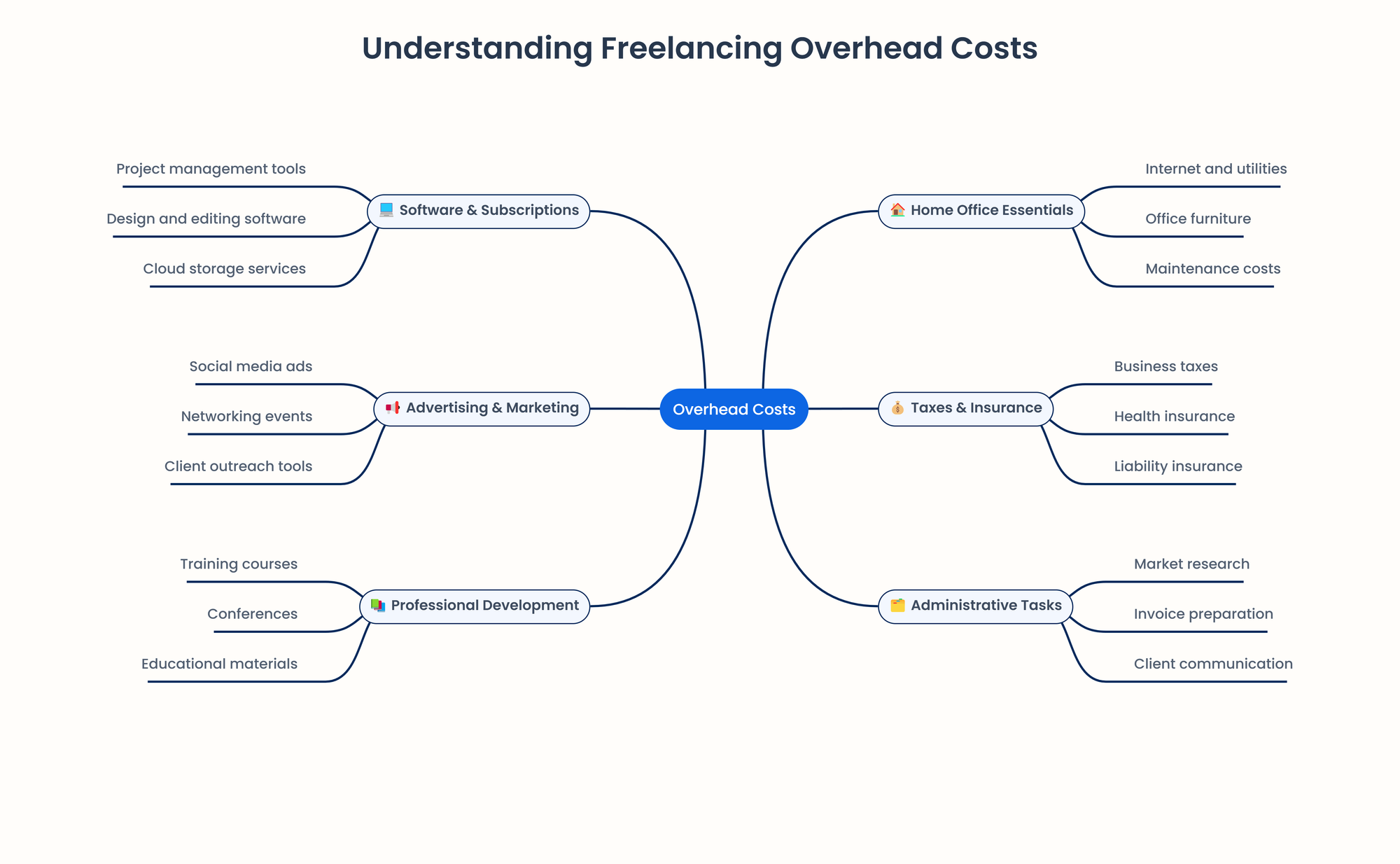
The Confidence Factor: This is the intangible piece. Accept the fact that you are capable of adding a lot to your clients. That is why confidence in your strategies means confidence in your price. Do not work for less because you think that the employer does not care or that there are no better candidates for that job.
Freelance Market Rates
After getting familiar with your worth and expected expenses, it is now time to understand that within the market offers.
You can approach learning your freelance rates in two ways:
- By getting to know the rates of in-house professionals in your field
- By exploring freelance platforms to familiarize yourself with the established rates there.
According to statistics the freelance salary ranges from $13000 to $167000.
You can do some research on the market rate of your services as if you were a full-time employee on an in-house team doing the same work you do as a freelancer.
This gives you a rough range of what you can expect to be paid.
Using benchmark salaries from full-time employees is an excellent way to create a baseline rate expectation. For example, if you’ve found that the median copywriter’s salary is $58,655, then you could do some math to figure out that a decent hourly rate might be $35-40 an hour.
If you’re thinking of becoming a graphic designer, then you can expect to be paid around $55,642 per year. If you want to earn more, then you can adjust that rate from there.
Having this baseline understanding of what employees are getting paid for the same work you’re doing will help to ensure you don’t set pay rates below you.
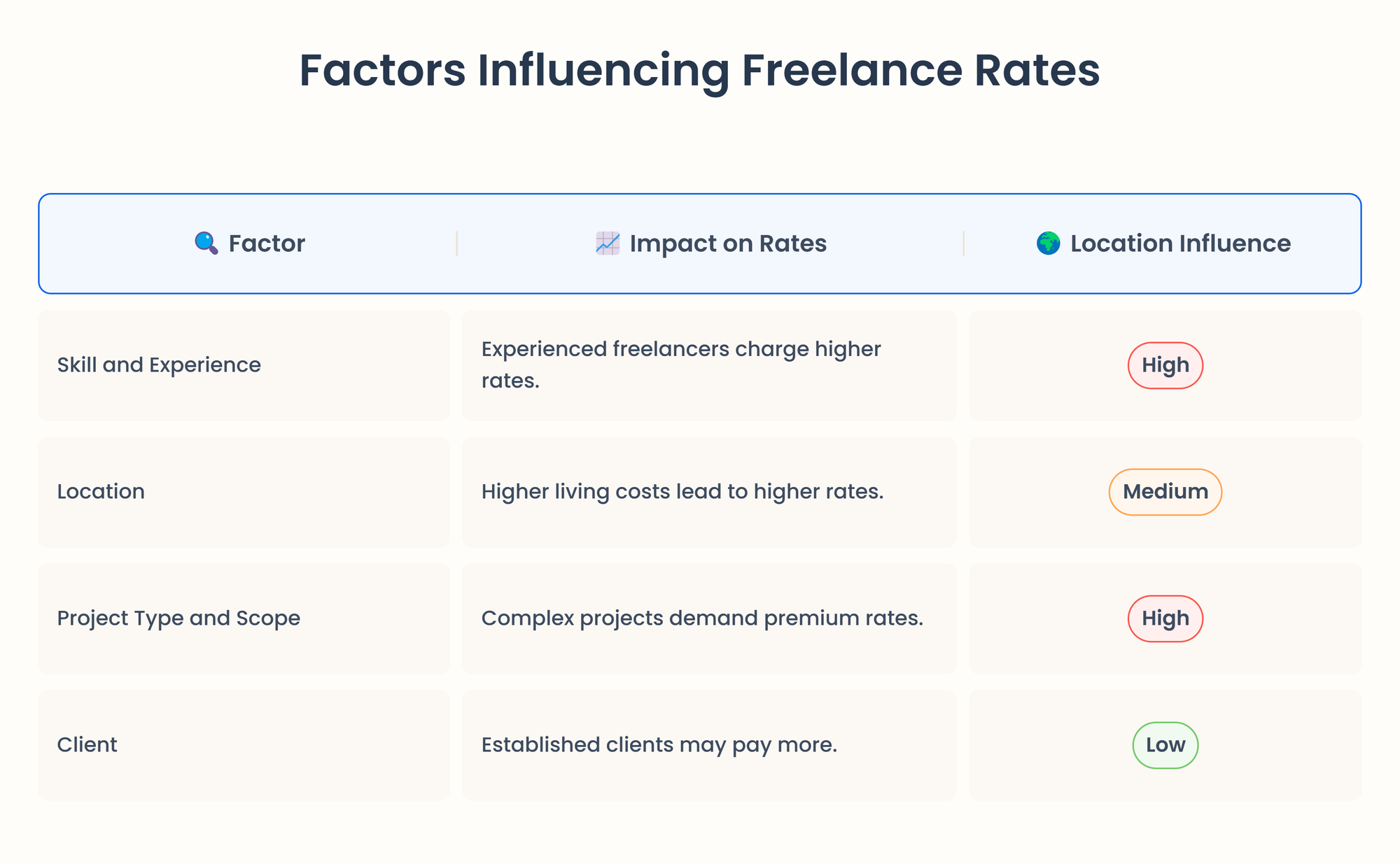
Industry-Specific Platforms: There is usually salary information on the internet and websites such as Glassdoor, PayScale or specific job sites for freelancers. Narrow search results by filtering experience level and location.
Freelance Marketplaces: Freelancer profiles at Upwork, Fiverr, and Guru websites come with the indicated price rates for their services.
Networking: Seek out other independent contractors. Get in online groups or go to events, – the professional discussions of rates is useful and can offer valuable insights.
Client Budget Considerations: Identify potential clients and what their usual spending plan is. Evidently, large firms tend to have more resources than start-ups or other small firms.
Rate Calculators: Check online resources that will allow you to calculate hourly rates based on the income, expenditures, and working hours you want. Remember that special skills should be considered for value-based pricing. Taper rates as they come up with the portfolio to hold their reputation.
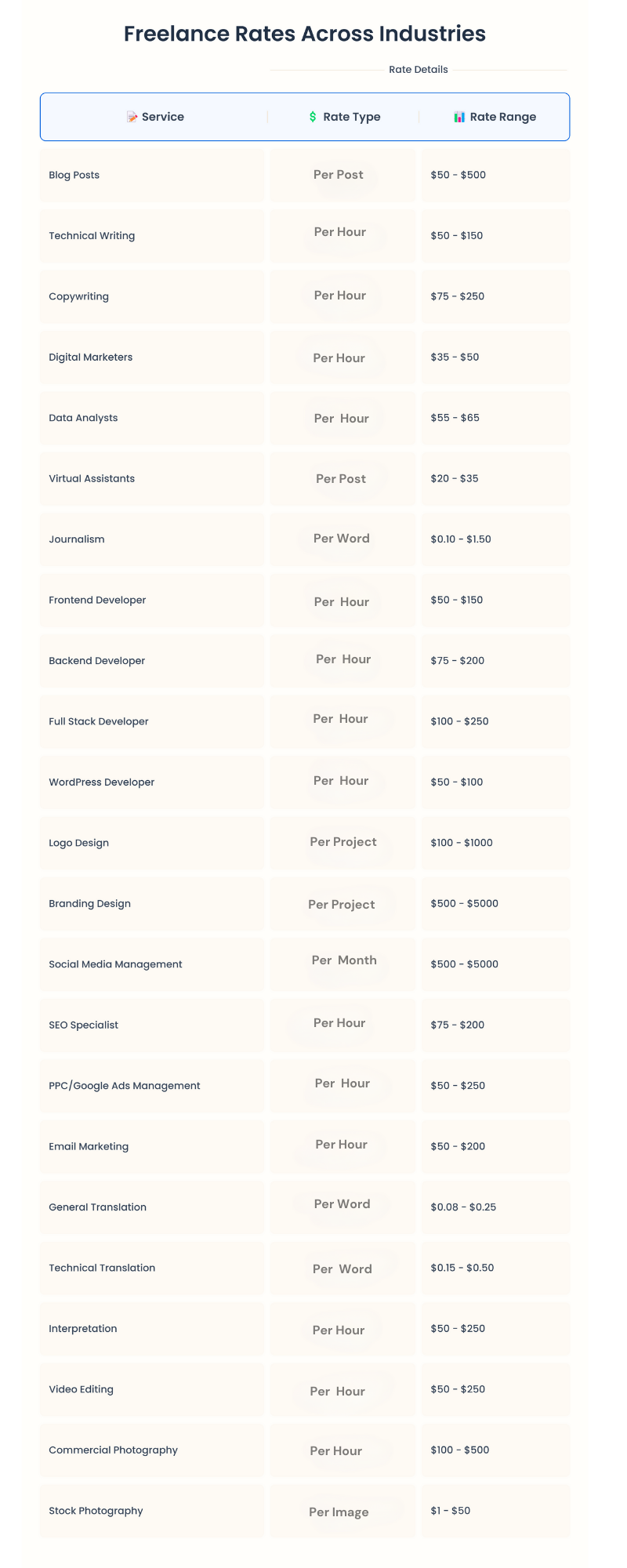
These rates reflect the diverse nature of freelance work, offering a wide range of services and pricing!
How to Bill Clients as Freelancer
Regarding pricing, there are many strategies that clients can pay for your services and the most effective depends on the project and your personal preferences.
Hourly Rate
It is the most common method. You generally make your rates per hour and work around that fee.
It is useful when the scope of project delivery is not well defined or when the requirements are dynamic.
Hourly Rate = Desired Annual Income ÷ Billable Hours per Year
Adjust based on your findings from market research and personal costs.
Let's break this down for clarity.
Numerator: Desired Annual Income – this is the total amount of money that you wish to earn in one calendar year.
Denominator: Billable Hours per Year – this is the estimated number of hours you expect to effectively charge clients in one year.
The end figure is the hourly rate that you should be charging.
Example calculation:
If you wish to make $75,000 in a year.
You plan to bill 1,500 billable hours every year.
Your hourly rate would be: $75,000 ÷ 1,500 = $50 per hour
💡In billings, use time tracking software with billing and invoicing functionality because it is responsive and gives your clients a clear invoice.
Project-Based Rate
Upfront project billing eliminates risk, and removing risk offers great value. So, in a sense, offering upfront project-based pricing in itself provides more of an opportunity to raise prices.
In general, the larger the project, the more you should consider project-based billing.
This gives the client a better idea beforehand of what the project will cost (as opposed to waiting until the end once all hours have been added up) and offers you, as the freelancer, an opportunity to build things like edits, mistakes, and organization into your base price.
You work at a fixed price per project with no hidden charges. This is a suitable billing structure for projects with set project scopes.
Accurate scoping and time tracking are critical in this model. Everyone must understand all activities, expectations, and deadlines to prevent the project from getting out of control.
Scope creep refers to the evolution, changes, and growth of a project’s scope after the scope has already been determined and the project has begun.
For example, let’s say you’re creating social media posts for a client’s platform. Your scope includes 12 social posts per month. You create these social posts every month on the 15th for the upcoming month.
On the 20th, the client sends you a few articles they’d like featured on social media for the next month, but you’ve already created your 12 posts. This is scope creep.
Your options include:
- Doing the extra work and not getting paid for it
- Differing to include the new content in next month’s batch as part of the next group of 12
- Adding the new posts to the current lineup only after bringing up the added work and associated costs.
To manage billing for scope creep hours, always bring it up to the client before doing the work. Don’t begin unless you know they are willing to pay, or you risk not getting paid for the additional time and work.

Monthly billing
Another model worthy of consideration is to bill freelancer projects on a monthly basis to integrate your financial processes.
Here’s a step-by-step guide to help you set it up.
Define Billing Terms
- Project Scope: Be specific about the services that you are going to offer.
- Payment Schedule: Determine the billing dates (the end of the month, middle of the month, or after you have completed a certain stage of the project).
- Payment Method: Decide what methods of payment you are going to use (for example, bank transfer, PayPal account, etc.).
Create a Contract
Contracting parties should sign the contract, to include:
- Project scope
- Monthly payment amount
- Due dates for payments
- Terms for late payments
Set Up Invoicing
- Choose invoicing programs (such as QuickBooks, FreshBooks, or Invoice Ninja) or make a template in MS Word or Excel.
- Include:
- Your business details
- Client details
- Invoice number and date
- Service offerings offered
- Payment terms and due date
- Total amount due
Track Hours and Expenses
- A reliable time tracker maintains records of working hours and any costs that have been incurred in the project.
Send Invoices Promptly
- Pay bills as due and when making the payments ensure it is according to the agreed invoice period.
- It is, therefore, useful to remind the other person a few days before the due date you agreed upon.
Follow Up on Payments
- In case you have not received a payment when it was due you can follow up with a polite message.
- Avoid arguing, being rude, or being offensive to anyone you interact with in your professional capacity.
Review and Adjust
- Once a quarter, review your billing process.
- Change the rates or the terms depending on the feedback, workload, or market fluctuations.
Keep Records
- Save copies of all invoices and payments for booking, accounting, and tax purposes.
How to Use TMetric Freelance Time Tracker in Billing
TMetric is a freelance time tracking and project management tool that may greatly improve the management of freelance projects, particularly with reference to billing strategies.
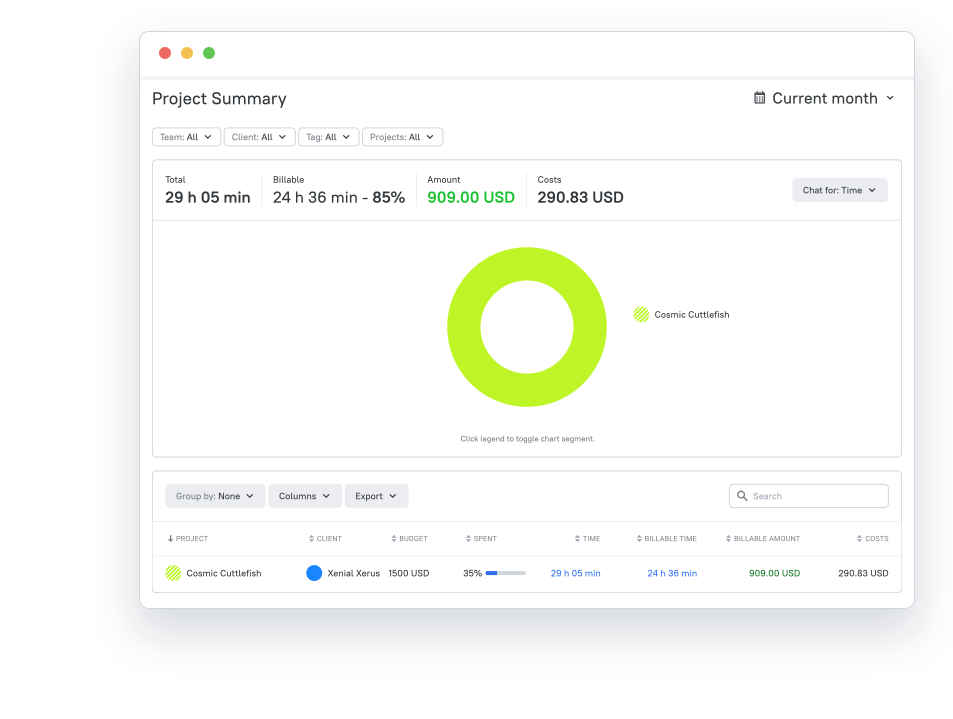
How TMetric Supports Hourly Rates in Freelance Billing
- TMetric offers freelancers a clear timeline that visualizes work hours so that clients instantly get an overview of project time consumption.
- The tool provides reports displaying hour-by-hour or task-by-task employment for specified activities or projects. This transparency is valuable, because it justifies the cost of an invoice to the client.
- Freelancers can set different hour rates by tasks and projects.
How TMetric Supports Fixed Project Rates in Freelance Billing
- TMetric enables its users to create projects and set a definite rate per each project.
- In a project creation, you can opt for the ‘Fixed Price’ where by you are able to fix a rate for the whole project. This rate is used to determine the overall cost of the project.
- TMetric also contains options for task billing within a project. This enables you to further subdivide a big job into measurable and smaller bits that can facilitate freelance project management and billing.
- TMetric provides automated billing for any kind of project.
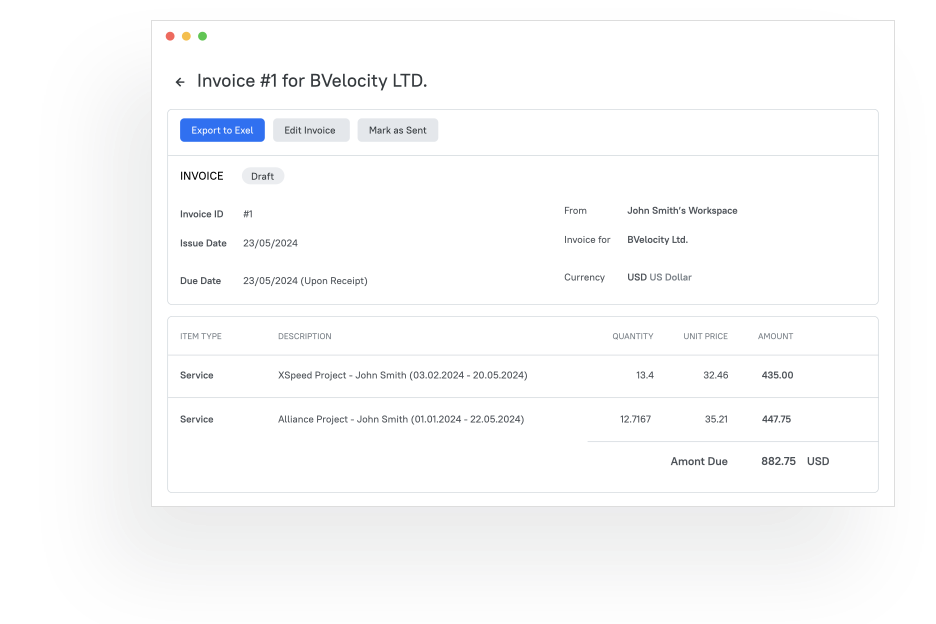
Monthly Billing
- TMetric can automatically generate invoices either based on hours worked or specified rates monthly. This saves a lot of time in billing and makes it easier for people to make their payments on time.
- It also has billing reports which enable freelancers to create invoices and monitor monthly payments.
- TMetric also integrates with different payment software so that the freelancer can easily invoice their client and receive payment.

Bonus: Top 2 Recommendations on Freelance Projects
Pay Attention to Contract Details
There’s one thing you should do before you consider your rates – discuss your contract terms, so you know what else you’ll need to consider when pricing out quotes.
A good freelancing contract will be transparent and share all of the most important details you need to understand, including:
- Scope of tasks
- Timeline
- Expected cost structures
- The cost of tools you may need to use to get the work done
- Other fees.
It’s good to have a basic personal contract drafted that contains the terms you prefer to work within.
That way, you can set a precedent for what you expect, and it gives your client a good idea of how you work before actually getting into a project.
For example, you might choose to add higher fees to your project but are willing to prolong the time of receiving the payment.
Or, you may prefer to get paid sooner, offering a small discount to clients who pay within ten days. These are just a few examples of how you can initiate control over how much you’ll get paid before even offering a quote.
If you can offer a lower risk for the project, a tighter turnaround, or higher-level work, these are all great ways to boost your rates.
When forming a freelance contract, clients exchange a level of risk for the project with the money they are paying you.
The more they’re paying, the less risk there should be. If you can assure them of your work and contract security, you’ll have more power to increase your rates, and they’ll still feel confident in your abilities.
Here's an example of a freelance contract you can use.
Increase Billing Rate By Creating Value
Arguably the most critical thing you can do to create billing rates you can proudly stand behind is creating and understanding your value.
Too often, freelancers don’t believe in themselves or their work, which leads them to set too low rates and hold them back from growing financially and professionally.
When you know the value you bring to the table and discover ways to increase this value to your clients, you’ll be able to justify every rate you set with confidence.
Things like showing up early and staying later or having specialized experience in a niche that other freelancers don’t have to justify a higher rate.
You just have to find what makes your skillset unique and 'appealing' from the professional point of view.
There’s no need to get defensive about the rates you've set for your service. Don’t feel like you have to justify everything, though. Stand behind your rates, knowing that is truly what you’re worth, and only justify it if you are directly asked.
Have you been thinking about increasing your rate but feel nervous about doing so? Act early rather than later. You may have to justify this decision later on, so instead, go into it with the higher rate you wanted in the first place.
Conclusion
Remember, your time is precious, and your expertise is valuable. Don't be afraid to charge what you're worth.
Being able to calculate your working expenses is the most critical part of defining your working freelance rate.
If you’re not considering all the money you’ll have to pay out, then you’re not getting an accurate understanding of the income you’ll really be making.
Joining the world of freelancing requires a leap of faith but it is empowering due to the fast expansion of the freelancer market globally.
There’s much to learn about the administrative side that intimidates newcomers, like setting your project rate.
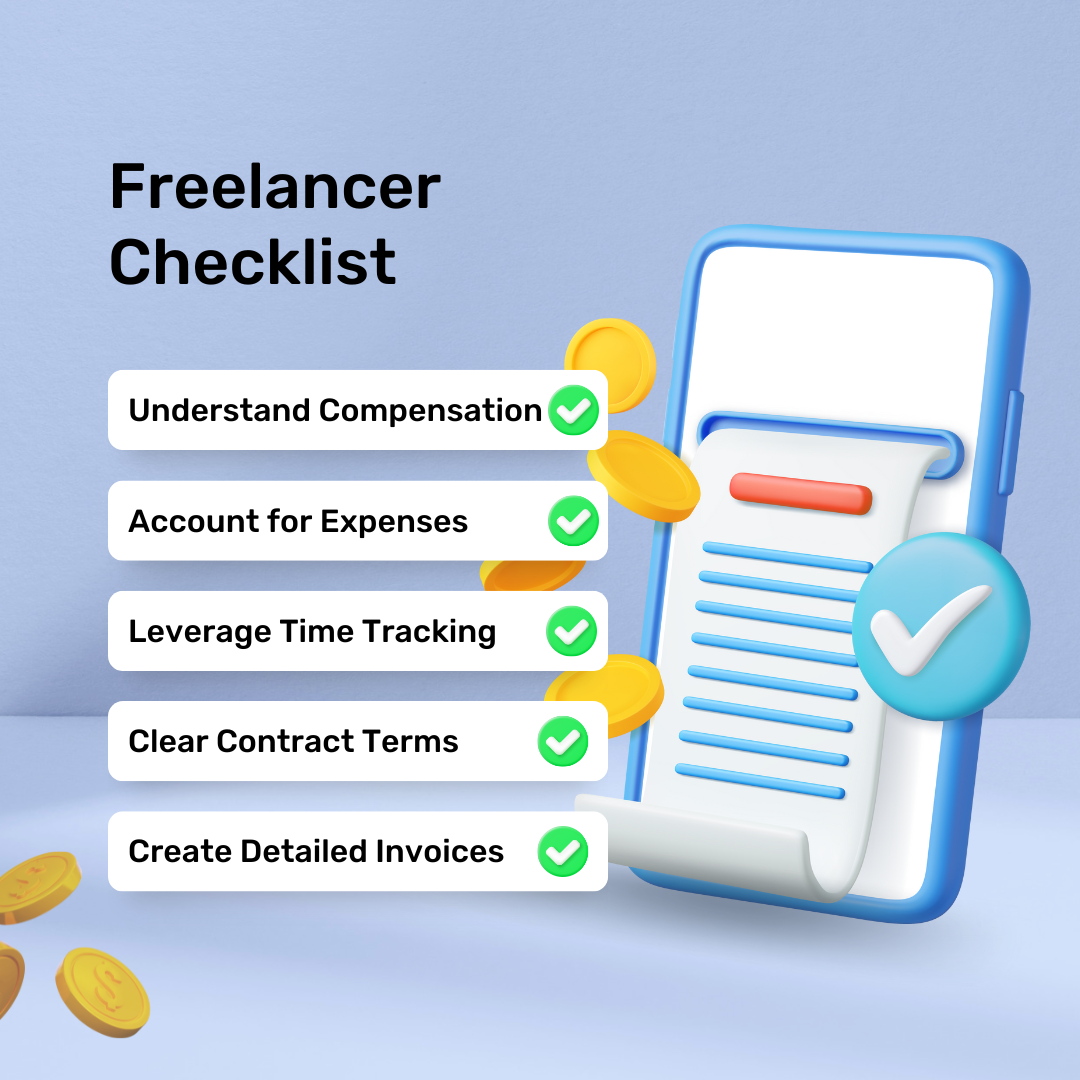
The best way not to feel overwhelmed, make better-informed decisions and set a rate with confidence is to:
- understand what salaried employees make in the same or similar role
- add expenses associated with work and project performance
- break it down into an hourly rate
- always use historic time tracking data to estimate the scale of the project.
These are hosting factors in setting informed project-based rates you give clients.
In case you want to learn more about freelance rates, there is a wealth of information from industry experts like Glassdoor and the American Institute of Graphic Arts, and the Editorial Freelancers Association professional organizations.
Author's Bio
Darya Jandossova Troncoso is a photographer, artist, and writer working on her first novel and managing MarketSplash digital marketing blog. In her spare time, she enjoys spending time with her family, cooking, creating art, and learning everything there is to know about digital marketing.


